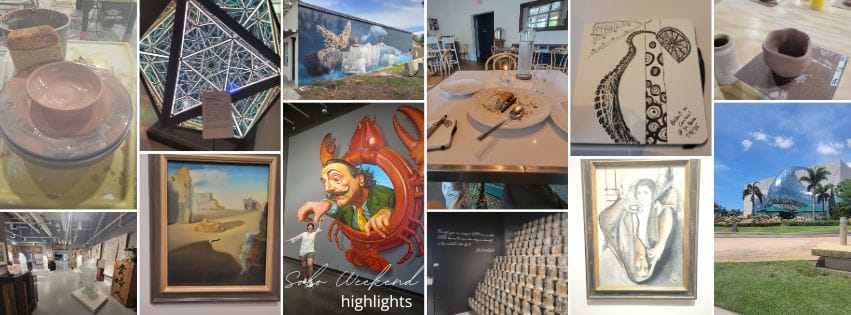Clay, Shadows, and Glass: The Art of Organizational Design

I slipped away for a quiet weekend in St. Pete. No agenda. Just space to walk, think, create. It’s amazing what you notice when you slow down.
Some people seek clarity through big questions or grand breakthroughs. Mine often arrive in the subtle, ordinary moments—the way light hits a shadow, the tension of fingertips shaping clay, the serendipity of one artist’s name resurfacing again and again. On this trip, I found myself surrounded by art—and in it, a mirror of how we work, lead, and design our organizations.
At a pottery studio, I sat at the wheel, coaxing clay into form. Pottery is an act of gentle force. You anchor the base with steady pressure, then slowly pull upward—never too hard, or the walls collapse. I got impatient. I pulled too hard. My piece broke.
I thought about how often we do this at work. We push too quickly, driving outcomes faster than the system can absorb. We accelerate initiatives without grounding them in a strong foundation. The form looks fine at first, but it collapses under stress. In my own work, I’ve seen leaders mistake speed for strength, but the real accelerant is patience. Presence steadies the walls. Pressure thins them.
Later, walking through the city, I noticed murals signed simply “MIZ.” Two days later, at the Dalí Museum, I turned a corner and saw the name again—this time on a featured installation. What once felt incidental suddenly carried context and weight.
It made me think about how meaning builds over time. A conversation in the margins, a pilot project, a side note on a whiteboard—often disconnected in the moment—may resurface later as something foundational. Serendipity often looks like strategy in hindsight. But it begins with curiosity, and with the willingness to notice patterns when they return. Leaders who make space for recognition, for connection, often discover that what seemed scattered was always pointing toward coherence.
In another gallery, a painting gripped me. A girl riding her bike, her shadow cast clearly behind her. At the alley’s end, another shadow loomed—tall, ambiguous. Was it a man with a weapon? Or a statue? The artist never said.
Ambiguity is part of leadership. Every organization has shadows. Resistance that might be risk. Feedback that might be a red flag—or simply noise. It’s tempting to act as though we can eliminate uncertainty, but in reality, clarity is not control. It is perspective. The best leaders I’ve known aren’t those who rush to declare certainty, but those who can move with care, even when the picture is incomplete.
And then, at the Imagine Museum, I turned a corner into a room of glass kimonos. Human-sized. Delicate. Hauntingly still.
I learned that the kimono was historically designed to flatten individuality—to de-emphasize shape and uniqueness in service of the collective. It struck me how easily organizations do the same. Culture, when rigid, can erase as much as it elevates. We standardize what doesn’t need standardizing. We ask people to read between the lines rather than speak plainly. Before we know it, we’ve created forms that look elegant on the outside, but are hollow within. Scaling well requires structure, yes—but also the courage to leave room for humanity.
I came to St. Pete to rest. I left reminded that insight often lives in the in-between—between pressure and patience, chance and connection, ambiguity and perspective, structure and self.
What art showed me—what this weekend reminded me—is that the best organizations are like good design: shaped with care, built with intention, and alive with humanity.
We lead better when we listen deeply.
We operate better when we move gently.
We scale better when we leave space for surprise, softness, and self.
Not everything has to be optimized.
Some things need to be felt.
A question for the road:
Where in your work are you gripping too tightly—when all it might need is a gentler hand?